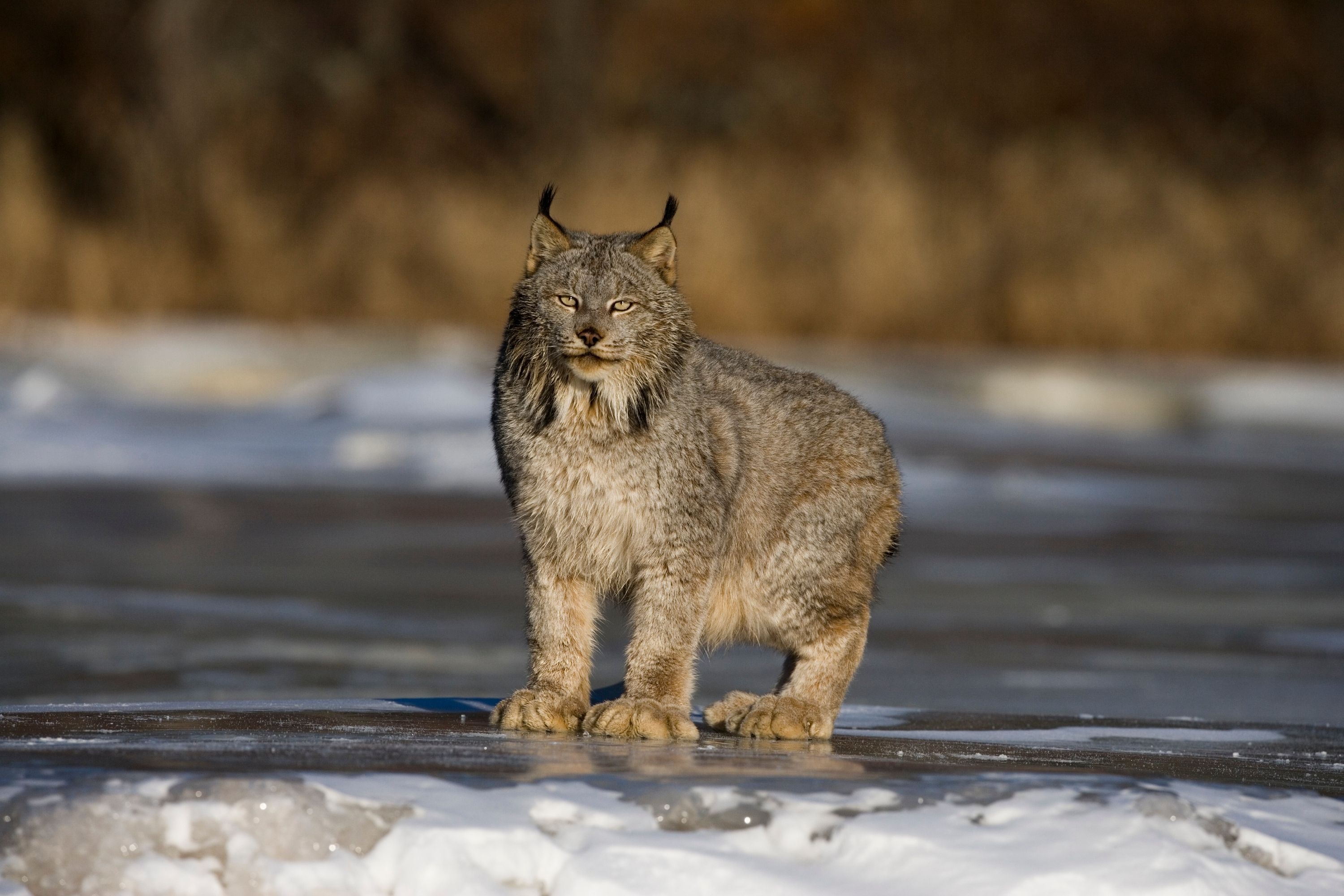Canada lynx
(Lynx canadensis)

Description
The Canada lynx (Lynx canadensis) is a medium-sized North American lynx that ranges across Alaska, Canada, and northern areas of the contiguous United States. It is characterized by its long, dense fur, triangular ears with black tufts at the tips, and broad, snowshoe-like paws. Its hindlimbs are longer than the forelimbs, so its back slopes downward to the front. The Canada lynx stands 48–56 cm (19–22 in) tall at the shoulder and weighs between 5 and 17 kg (11 and 37 lb). The lynx is a good swimmer and an agile climber. The Canada lynx was first described by Robert Kerr in 1792. Three subspecies have been proposed, but their validity is doubted; it is mostly considered a monotypic species. The Canada lynx is a lean, medium-sized cat characterized by its long, dense fur, triangular ears with black tufts at the tips, and broad, snowshoe-like paws. Like the bobcat, the hindlimbs are longer than the forelimbs, so the back slopes downward to the front. The Canada lynx is sexually dimorphic, with males larger and heavier than females. The lynx is between 73 and 107 cm (29 and 42 in) in total length and stands 48–56 cm (19–22 in) tall at the shoulder; females weigh around 5–12 kg (11–26 lb) while males around 6–17 kg (13–37 lb), though an exceptional male in Pennsylvania weighed 20 kg (44 lb). Physical proportions do not vary significantly across the range and are probably naturally selected to allow for survival on smaller prey. The stubby tail is 5–13 cm (2.0–5.1 in) long and has a completely black tip. Skeletal muscles make up 56.5 % of the Canada lynx's body weight. The Canada lynx occurs predominantly in the dense boreal forest of Canada, and its range strongly coincides with that of the snowshoe hare. In the past, the lynx occurred in the northern United States in 24 states, possibly southward to the Rocky Mountains in New Mexico and northward to the tree line in the Arctic through coniferous forests in Alaska and Canada. The lynx continues to occur in most of Alaska and its former range in Canada. In the United States, the Canada lynx occurs in the Blue Mountains, the Cascade Range and the southern Rocky Mountains, the Great Lakes region and New England. The lynx was successfully reintroduced in Colorado with a stable population by 2019, after being extirpated from the state in the 1970s.
Taxonomic tree:







